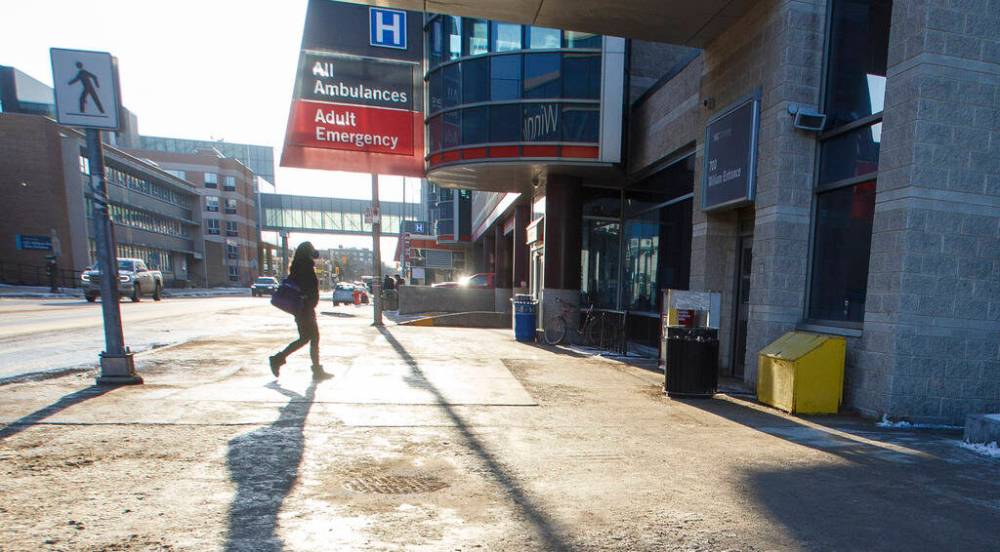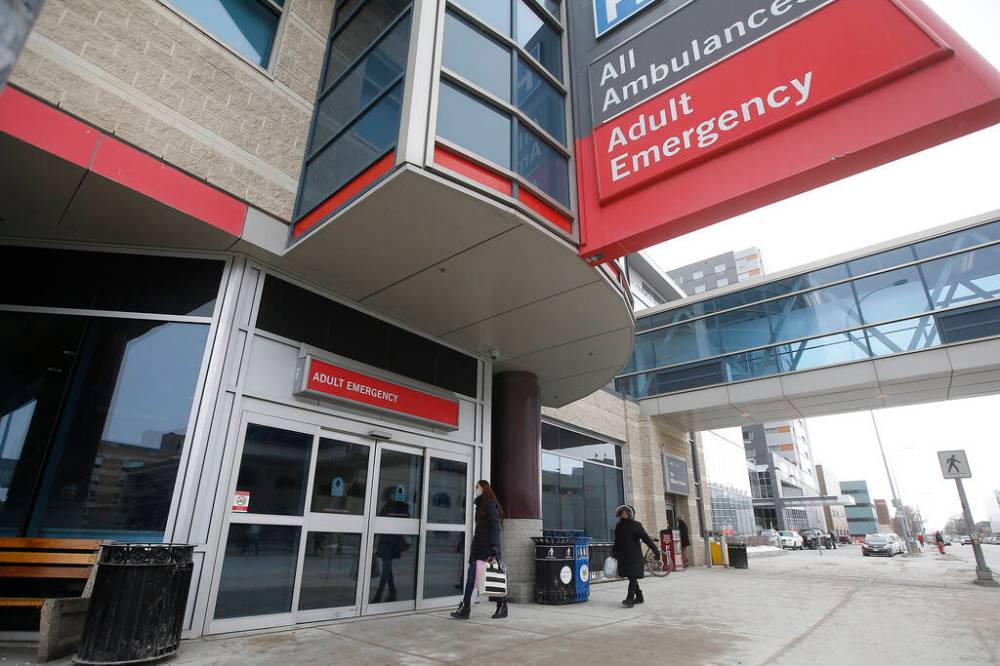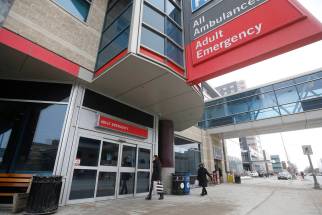HSC forced to redeploy nurses with less training to ER
Read this article for free:
or
Already have an account? Log in here »
To continue reading, please subscribe:
Monthly Digital Subscription
$0 for the first 4 weeks*
- Enjoy unlimited reading on winnipegfreepress.com
- Read the E-Edition, our digital replica newspaper
- Access News Break, our award-winning app
- Play interactive puzzles
*No charge for 4 weeks then price increases to the regular rate of $19.00 plus GST every four weeks. Offer available to new and qualified returning subscribers only. Cancel any time.
Monthly Digital Subscription
$4.75/week*
- Enjoy unlimited reading on winnipegfreepress.com
- Read the E-Edition, our digital replica newspaper
- Access News Break, our award-winning app
- Play interactive puzzles
*Billed as $19 plus GST every four weeks. Cancel any time.
To continue reading, please subscribe:
Add Free Press access to your Brandon Sun subscription for only an additional
$1 for the first 4 weeks*
*Your next subscription payment will increase by $1.00 and you will be charged $16.99 plus GST for four weeks. After four weeks, your payment will increase to $23.99 plus GST every four weeks.
Read unlimited articles for free today:
or
Already have an account? Log in here »
Hey there, time traveller!
This article was published 28/06/2022 (1257 days ago), so information in it may no longer be current.
Staff shortages in Winnipeg’s largest ER are forcing the closure of resuscitation rooms and treatment beds during the busiest season for trauma patients in Manitoba.
On Sunday, the Health Sciences Centre emergency department was down 12 nurses, and each shift that weekend was short between 10 and 14 ER-trained nurses. There are supposed to be 24 nurses in the ER each shift, but the department, like most hospital units in the city, has been dealing with chronic shortages that have been getting worse as more nurses quit or call in sick this summer.
Already, licensed practical nurses are being asked to help out in the ER resuscitation rooms, two HSC ER nurses told the Free Press. The resuscitation rooms typically require a team of highly trained trauma nurses and physicians, who work together to save the lives of patients who’ve been in car accidents, or have gunshot wounds and other life-threatening injuries.

LPNs have a lower level of training than registered nurses, they get paid less, and they’re not supposed to be responsible for ER trauma patients. But some have more hospital experience than newly graduated ER nurses and they’re being pulled in because there aren’t enough trauma-trained ER nurses to cover shifts.
“Some of the LPNs I work with are some of the smartest nurses in the department… So they would be more than capable of going into the trauma room. It’s just, they do not get paid enough for the responsibility that they are taking on,” one ER nurse said.
“Some of the LPNs I work with are some of the smartest nurses in the department… It’s just, they do not get paid enough for the responsibility that they are taking on.” – ER nurse
Both spoke on the condition their names not be published because they’re afraid they’ll be fired for speaking publicly. They said consistent, per-shift shortages of ER nurses mean the ER usually has to close two of its trauma rooms and six of its treatment beds. Last weekend, particularly low staffing resulted in the closure of an additional six treatment beds, for a total of 16 ER-patient spaces shut down.
Resuscitation training for some licensed practical nurses at HSC begins next month, Shared Health confirmed, signalling a move to increasingly rely on them to care for trauma patients. That’s already happening, a second ER nurse confirmed.
“We have so few resuscitation-trained nurses that we have no choice but to pull from other sections of the department. In such instances, we try to pull the more senior nurses with the most experience into the resuscitation room,” she said.
“Because we have been hemorrhaging nurses, our staff is often very junior, so an LPN is the most senior (and) most experienced nurse to pull into the resuscitation room.”
“Because we have been hemorrhaging nurses, our staff is often very junior, so an LPN is the most senior (and) most experienced nurse to pull into the resuscitation room.” – ER nurse
In a statement, a Shared Health spokesman wrote the nurse staffing vacancy rate is currently 26.6 per cent in HSC emergency department.
“Education standards for LPNs in Manitoba are amongst the highest in the country, allowing them to play an important role in the province’s health-care system — including in emergency departments — and qualified to perform to a higher scope of practice. This includes work in resuscitation and trauma,” the spokesman stated.
“Extending opportunities to LPNs to participate in orientation training for resuscitation and trauma reflects our support for these valuable staff by providing them with opportunities to work to their full scope of practice. The training of these nurses will be done in stages, with a few LPNs scheduled to participate in resuscitation training next month.”

Until now, asking LPNs to help with documentation and routine tasks in resuscitation rooms has been a “long-standing practice,” Shared Health stated, but LPNs haven’t been the primary nurse responsible for those patients.
HSC CEO Dr. Shawn Young revealed Monday the hospital asked paramedics to fill in during dire staff shortages last weekend, and Health Minister Audrey Gordon has said the province will not turn down help from other professionals who want to step in.
When the ER put a call out to advanced-care paramedics on Sunday, critical-care nurses, managers, and nurses from other units had already been reassigned to the ER, and other full-time, part-time and casual nurses had been called in. Although they’ve now been asked, paramedics have not yet staffed the HSC ER. There is also a paramedic staff shortage in Manitoba, although they have filled in at other emergency departments in Winnipeg and in smaller centres such as Altona.
“… If there’s no change, yeah, I’ll go find a different job that I’m less stressed about.” – ER nurse
As a tertiary-care hospital, HSC is the trauma centre for patients all over Manitoba.
Although working in the ER at HSC is her “dream job,” one nurse said she sees approximately two of her colleagues quit on a weekly basis. She said the department needs more than lip service from government leaders to be sustainable.
“I still have hope for the department. I think that there’s still a lot of things that can be done, and I would like to continue working there. But unfortunately, if there’s no change, yeah, I’ll go find a different job that I’m less stressed about,” she said.
katie.may@winnipegfreepress.com

Katie May is a general-assignment reporter for the Free Press.
Our newsroom depends on a growing audience of readers to power our journalism. If you are not a paid reader, please consider becoming a subscriber.
Our newsroom depends on its audience of readers to power our journalism. Thank you for your support.















